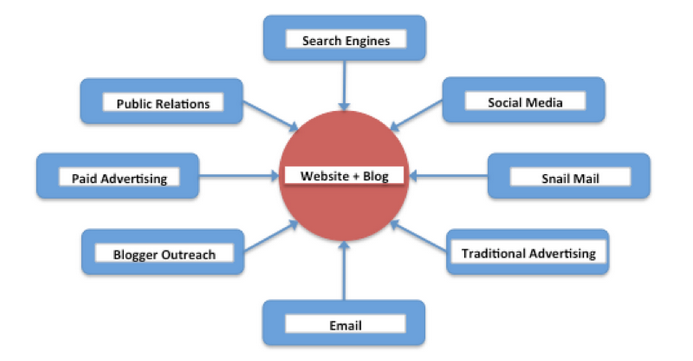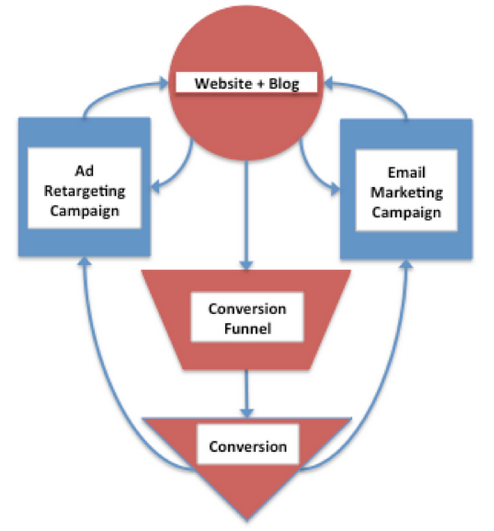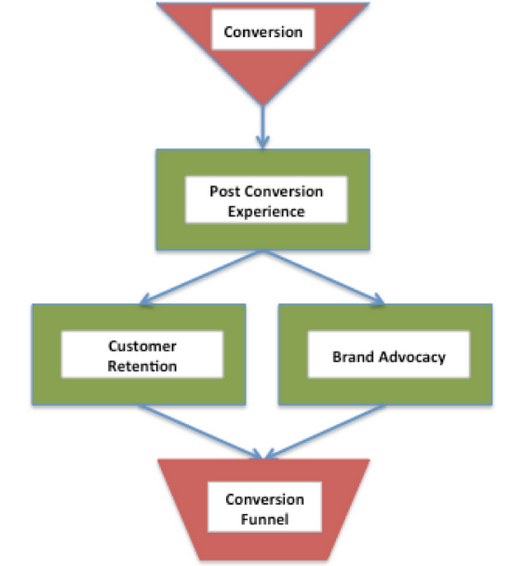For the first post on here on the Drakon Digital Blog I’ve decided to focus on the one thing that weaves its way through every Internet marketing campaign, the conversion process. Below I will outline from a bird’s eye view what I believe every conversion process should look like. There may be slight differences based upon the industry, market, and goals of the campaign, yet in general this post will provide you with a solid foundation to work with.
The Hub & Spoke Model
I use the hub and spoke model because it’s easy to understand. The “hub” is your website and/or blog. The “spokes” are the various places online you will spend time marketing your website. Once you have done your due diligence and know who your target market is and where they tend to spend their time online you can begin piecing together your strategy.
Search Engines
Here I am specifically talking about search engine rankings. Whether it be Google, Yahoo, Bing, Baidu, Yandex, or another of the many engines, ranking well for your top keywords on the engines most used by your target market should be a long-term marketing goal. Most often, first page rankings for long-tail keywords should be your initial focus. As you build your presence and gain backlinks you can gradually shift your focus towards more competitive keywords.
Social Media
Social media can be an incredible source of traffic. It can also be a huge time suck (or financial drain if you pay someone to manage it for you). This is why it is critical to understand which social media platforms the majority of your target market is using before pushing your company and brand onto every platform available. Consider your time, budget, and expected benefit from each platform. Then choose which to operate on and go forward. It can be extremely damaging to your brand to actively engage potential customers on a platform to only decide it’s not for you and abandon your efforts.
Talk with your customers either in person or through email. If possible survey people in your target market. Look at your website’s analytics to see traffic patterns. Make sure you have demographic reports enabled. Where are your site visitors coming from? What are their ages and interests? Use this information to create personas.
Snail Mail
That’s right, I’m going to say it! Snail mail isn’t dead. If used correctly it can create a much stronger relationship than any email can. A handwritten, personal thank you note can have a huge impact. Granted you don’t have time to write personal notes to everyone who helps you along the way, yet when you can find time to write a personal note, however short, it will not be forgotten.
Traditional Advertising
Any form of traditional advertising can and should be used to direct traffic into your online conversion funnel. Whether the ad is aimed at in-store sales, driving traffic to one of your spokes, or directly to the hub, your company’s web address needs to be clearly visible on all traditional ads.
Email marketing will likely be one of your highest converting channels. There are many good options out there so do your research and determine the best option for you. You should always be thinking about how you can add quality addresses to your email list.
Blogger Outreach
Keep a list of the various blogs you want your company mentioned on. Work hard to build relationships and over time you will end up with a network of blogs that will promote your content, products, services, social media contests and more.
Paid Advertising
Advertising online on search engines, social media platforms, blogs, and through retargeting campaigns can become expensive very quickly. Compare your ROI on various platforms. If the ROI is negative or you are not reaching your ad campaign goals, switch to a different platform. Keep advertising on the spokes where ROI is positive or your campaign goals are achieved (e.g. $5 cost per new email signup). Be sure to give each advertising platform long enough to get statistically significant results. A/B testing of ads should be an ongoing process to increase the performance of your advertising campaigns over time.
Public Relations
In some industries, traditional PR agencies can get in contact with popular blogs, websites, and companies that are difficult for a traditional online agency to reach. PR agencies can be quite expensive so make sure there is no overlap in the people your online and PR agencies are contacting.
The Conversion Funnel
The Conversion Process
After determining what the hub and spokes for your business will be, guiding visitors through your website’s conversion funnel is the next step. Once you have driven traffic to your hub by distributing content and interacting with customers on all of your chosen spokes your website needs to clearly direct potential customers through to a completed conversion.
Ad Retargeting & Email Marketing
When visitors leave your site before completing a conversion they should be directed into your ad retargeting campaign until they convert. This is done automatically by your retargeting platform. Once a visitor converts on your site you should have captured their email address. Now that you have their email address, add them to your email marketing campaign.
The Post-Conversion Process
The Post-Conversion Experience
From the post-conversion thank you page on your website to the follow-up email everything you do after the conversion is more important than all of the work you have done throughout the hub and spoke conversion process thus far. All of the hard work you have done can be undone with a negative post-conversion experience. Now you have the opportunity to create brand advocates and life-long customers.
Customer Retention
Email customers on a consistent basis. Subscribe to your large competitors’ email lists and take note of how often they send emails. You want to stay in contact without becoming annoying. Carefully watch the number of people who unsubscribe from your email list for changes after you make changes to the frequency of your email campaigns.
Brand Advocacy
When you notice someone mentioning you online, a customer, blogger, journalist, etc., reach out and thank them for their sharing your brand. Keep a list of these people and reach out to them on occasion and when you need some feedback on a new product or service. Everyone loves to be asked for their advice and to be in-the-know when your have new stuff coming down the pipe. Building relationships will encourage brand advocacy, which is one of the most effective tools in your marketing toolkit.


